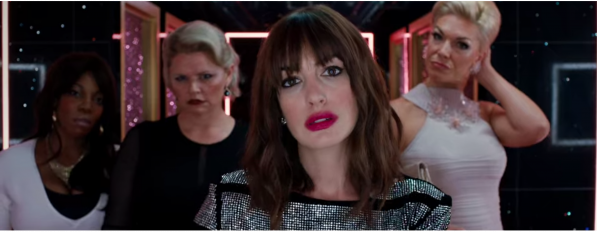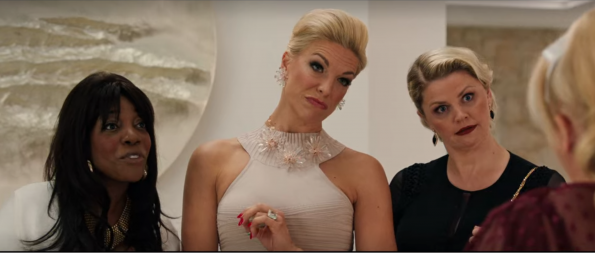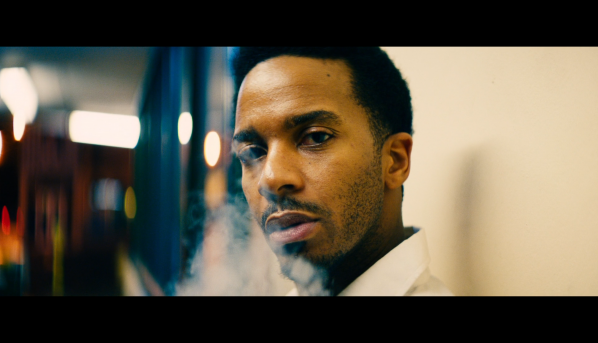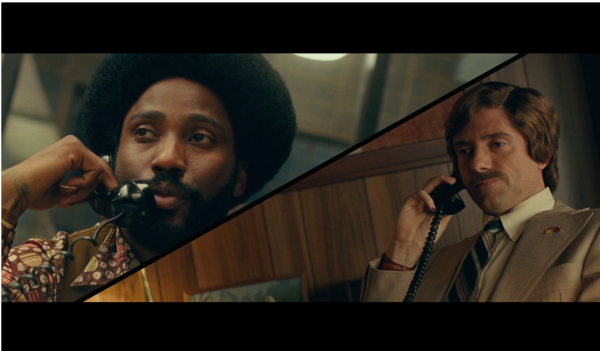by Dr. Sharon Coleclough
Representation in cinema is a subject on which many people are focussing, whether it is the ongoing need for inclusion and for BAME actors and creators to be visible within the industry at every level, or if it is the almost inevitable belated recognition and concern over the lack of inclusion when the awards season hits. There are of course several initiatives led by high profile actors and directors from the BAME talent pool who are working to raise awareness of the unequal representation in the film and television industry of BAME contributors (see Ruddick, 2016).
However, there is also the question of what film educators can do to empower their BAME students who are focussed on entering the industry and making products which reflect them, their experiences, and their narratives. This responsibility means that as lecturers we need to ensure we are giving all students the tools to ensure everyone on screen is shown literally in their “best light”. This is not simply an identification of the power of lighting, but of knowing how to work best with actors of every skin tone through lighting, filter selection and make-up. By enabling students to realise that there is a need to work with individuality alongside equality we as teachers in the field can help them improve their work. In relation to this aim it is important that we have conversations about diversity within the classroom and the workshop and are not worried to explore that different cast members may need different lighting and camera adaptations to support their on-screen work as an actor.
We also need to address that lighting technology has developed as have the ways in which we look at teaching it within the college or university setting. Traditional techniques, such as three-point lighting, sit next to lighting for greenscreen with little between them to encourage a student to really consider the artistry of lighting for a moving image or beyond the need to adequately illuminate for the camera. That camera technology in terms of HD has moved on a great deal also impacts the ways in which lighting is taught and ultimately utilised by student, and professional filmmakers, higher contrast ranges and the ability to work within lower lighting conditions all change the relationship of the camera to lighting. Additionally, the links between actor choice (delivery of character) and technical selections are strong, and students of cinema must understand that all elements of the craft work to deliver the final concept of the performance on-screen (Coleclough, 2014).
We as lecturers need to give students the skills to work with everyone onscreen, enabling them to present the actor visually within the frame, supporting the actor’s work rather than impeding it and understanding the ways in which camera, lighting and make-up interact with each other. The focus of the technical skills of filmmaking needs to be upon having every person on screen look their best rather than have them fade into the background or in some cases disappear.

'The Hustle' – In this image with see the BAME actor underlit and at the edge of the frame, becoming invisible to the viewer.
An aspect of my own experience which encouraged me to underline the importance of integrating lighting for BAME actors and the differing approaches a filmmaker might take was an encounter with a BAME student who had made their first film as a director with a BAME cast. The student’s excitement and interest in making more films with a BAME cast was notable and something they wanted to develop as their studies came to an end in the final major project marking their graduation as a student of filmmaking. As a new member of staff I entered the tutorial process with the student towards the end of their project and saw on-screen a brightly lit space with the BAME cast, there was little depth, the skin tones were ashy and there was none of the atmospheric lighting that the narrative required. Having gently asked if the student had found it difficult to light the cast, they confirmed they had. I then shared some of the very straightforward ways in which a BAME actor could be lit and their make-up adapted to ensure lighting did not have to be simply flat and bright. The actors for this production had a variety of skin tones and the filmmaker identified that they had struggled to adequately light for all actors on set, with no direct knowledge to address this they had simply ensured there was a lot of illumination.
Through a few simple suggestions I changed the way in which the student would approach their next project and enabled the student to confidently use a BAME cast which was so central to their aspirations as a filmmaker creating narratives from personal experience. This underlined for me as a lecturer that simple elements can be added to teaching lighting along with basic technique to ensure that each student can bring their vision to the screen, and also that it was a conversation which needed to be front and centre when teaching film lighting.

The Hustle – Even in brighter interior lighting the lack of attention to make-up and placement in frame minimises the presence of the actor.
In very general terms the history of film lighting tends to focus upon the ways in which white talent may be lit on a film set. Tales from the early days of cinema suggest that the limited representation of BAME actors in cinema has been because they do not “read” as well on camera as their white counterparts, offering a technical reasoning for the excluding of BAME actors from Western cinema for the majority of the following decades.
The proliferation of white crew and indeed overall cast members did, and can still, mean that learning to light BAME actors tends to be overlooked or side-lined to a task which can be easily addressed by making relatively generalised adjustments which tend to not serve the individual. These are basic adjustments which might appear to speak to specific changes but tend to encompass only nods to the potential consideration of lighting anyone other than a white actor. Such adaptations essentially boil down to three approaches; light for the white actor on set, simply give the BAME actor more light, or colour the light (traditionally blue or yellow). Such generalised attitudes still lead to film and television lighting where BAME talent can be lit completely differently to other actors in the film or TV programme, or become unseen figures within the frame, their features disappearing as the white actor potentially sharing their frame is the focus of the lighting.
As BAME actors begin to be more fully represented in mainstream media we can see that there are still deficits in the way those cast members are lit, although this is beginning to be slowly addressed, and so offered to the audience, it is clear there is still space to improve. Where we have BAME directors, directors of photography, writers and casts we can see a real change in the way that BAME actors are lit and so visually/narratively presented, with consideration of the small but meaningful adaptations that can be made to really be able to “see” BAME actors. An excellent example of this is the work of Melina Matsoukas, Director and Executive Producer, and Ava Berkofsky, Director of Photograpy on the HBO series Insecure (2016-).
The series “explores the friendship between two African American women who deal with their…relationship while also grappling with conflicts inside and outside black culture” (Braxton, G. 2016). The centrality of African American actors in this series means that there is a real chance to explore lighting for BAME actors, with such work offering clear examples of good practice and wonderful well-considered imagery. Such knowledge needs to filter into the teaching and training of the next generation of filmmakers, white and BAME, so that everyone can be represented and have a place in the ongoing narrative. To achieve this in the higher education environment we need to combine critical analysis and practical instruction and experimentation.
Firstly, we should look at film lighting through the decades to see how BAME actors were lit, identifying clearly the issues with this lighting and considering/determining how such cinematic inequalities on screen could realistically be addressed. Secondly, we can learn from successful and considerate lighting seen in contemporary texts. By examining the body of work which is emerging where BAME actors take centre stage and BAME directors and directors of photography create films where everyone is seen, students of film can begin to seek inspiration and instruction. Some examples of increasingly diverse film and television output can be seen in the work of director Barry Jenkins, Moonlight (2016 – cinematography James Laxton) and If Beale Street Could Talk (2018 – cinematography James Laxton), director Ava DuVernay, Selma (2014 – cinematography Bradford Young) and When They See Us (2019 – series cinematography Bradford Young) and director Spike Lee, BlackKkKlansman (2018 – cinematography Chayse Irvin) amongst many others.

Moonlight – The reflectivity of the actors skin along with carefully selected lighting enhances the image and so the focus upon the actor/character.

BlackKkKlansman – Lighting works for both BAME and white actors in this film, all actors are visible through careful and considerate lighting selections.
Needless to say, these directors and cinematographers are just the tip of a growing movement to increase diversity onscreen and in turn give those teaching practical technique an ever-increasing resource to identify as good practice. Ruth Goldman (2018) has created a useful overview of this approach for the classroom which offers such comparison and asks students to question the decisions which have gone before in cinema.
However, I believe we need to push further into the technicalities of film lighting examining what we need to do for individuals and the differences in the ways we as filmmakers might approach differing skin tones for camera, an area which has not been widely explored. It is important to understand that lighting has many roles within a film, using the acronym DISC (Direction, Intensity, Source and Colour) we can begin to identify the many options which exist for the Director of Photography. When considering the cast, beyond basics such as the setting (interior or exterior and the season/location) and period the piece is set in, the DOP needs to consider visibility, emotion/narrative focus and general scripted appearance within their lighting set-up, alongside other wider aspects such as the overall ‘look’ of the film or series. Many aspects can be augmented or affected by the choice of exposure on the camera and if film or digital is being used – in cinema there are many moving parts and all have an effect upon each other.
Understanding the impact of these decisions and the knowledge to make informed choices for their productions is what we as practitioners and teachers owe to our students. It is not enough to offer general guidelines; specifics need to be addressed and openly explored ensuring that all students gain experience lighting diverse casts and learn to work with the technology at their disposal and not in spite of it. Such understanding needs to encompass how make-up can assist in addressing lighting, again embracing the fact that we are all individuals rather than a homogenous one size fits all group. For example white skin tends to need mattifying for film light, if we mattify darker skin tones they begin to lose the ability to reflect back the light adding to the danger of thinking we need to add extra light for the BAME actor and in turn creating hot spots (intense areas of bright light upon the skin). Therefore, in the case of darker skin tones we need to amplify reflection and surface area for the light, and so moisturiser or a reflective base are additions which are simple but can make a big difference on-screen.
Learning to use coloured light on all skin tones is also a useful skill and one that needs to be taught and then experimented with by students of film. Earlier the incorrect blanket use of blue and yellow light on BAME actors was identified, but this doesn’t mean that colour should not be used, even blue and yellow have their place. However, it should be applied with consideration, practice and an eye on the individual/s being lit. Shadow and Act (2014) offer an overview of lighting and colouring lighting for differing tones of complexion. Examples of applying different colours from pink through to gold to achieve differing effects, identifying the ways in which different skin tones can be enhanced through the use of underexposing or simplifying the approach to film lighting offer points for practice and guidance missing for many students of cinema practice.
It is this type of knowledge which film lecturers need to seek out and apply to their practical classes – experimenting with what lighting, make-up, and selections in camera can do with a diverse cast of onscreen talent, rather than staying with examples and methodologies which have been outgrown by a developing culture of inclusion and diversity.
Therefore, as we seek to extend the involvement and representation of BAME students and then graduates in film and television we need to carefully consider the ways in which we as production orientated lecturers can assist all our students in lighting and filming BAME actors. In doing so we can then more fully address the fact that BAME students still are not fully represented in education, arguably just as they are not fully represented behind and in front of the camera in industry, in turn empowering them to be seen literally and figuratively on-screen.
About the Author:
Dr. Sharon Coleclough completed her PhD in Cinematic Performance at the University of Salford in 2014. She is currently a Senior Lecturer in Film Production at Staffordshire University where her work combines the theory and practice of moving image production. Her work focusses upon the relationship of technology and art within cinema considering lighting, sound and cinematography and the ways in which meaning is created through the technical application of craft. Her most recent publication looked at the relationship of sound to the city environment in German cinema. Sharon also works internationally on a collaborative digital project, “The Laptop Tour” which considers the ways in which performance can be realised through alternate media and use of technology. Most recently she has been editing music video of a newly signed Sony recording artist.
Images
The Hustle (2019). [Online]. Dir. Chris Addison. USA: Metro-Goldwyn-Mayer (MGM), Camp Sugar (co-production), Cave 76, Pin High Productions. [Viewed 24 February 2020] Netflix. Still – 1:03:56
The Hustle (2019). [Online]. Dir. Chris Addison. USA: Metro-Goldwyn-Mayer (MGM), Camp Sugar (co-production), Cave 76, Pin High Productions. [Viewed 24 February 2020] Netflix. Still – 1:08:50
Moonlight (2016). [ONLINE Trailer] Directed by B. Jenkins. USA: A24, PASTEL, Plan B, Entertainment. [Viewed 24 February 2020] Amazon Prime. Still – 00:01:20
BlacKkKlansman (2018) [ONLINE Trailer] Directed by Spike Lee. USA: Focus Features, Legendary Entertainment (as Legendary Pictures), Perfect World Pictures (in association with) QC Entertainment, Blumhouse Productions, Monkeypaw Productions, 40 Acres & A Mule Filmworks. [Viewed 24 February 2020] Amazon Prime. Still – 00:01:03
Bibliography
Braxton. G, (2016). Issa Rae takes HBO from white ‘Girls’ to black women with ‘Insecure’. Los Angeles Times. Accessed 18 February 2020. https://www.latimes.com/entertainment/tv/la-et-st-hbo-insecure-20160730-snap-story.html
Coleclough, S. (2014). ‘Cinematic Performance’. PhD Thesis for Doctor of Philosophy by Research, University of Salford. Unpublished.
Goldman. R in post from Proctor. J. (2018). Why does my actor look like that? Teaching inclusive lighting techniques. EditMedia.Org. Accessed 18 February 2020. http://www.editmedia.org/2018/11/12/why-does-my-actor-look-like-that-teaching-inclusive-lighting-techniques/
Ruddick. G, (2017). Lenny Henry urges Ofcom to impose BBC diversity targets. The Guardian. Accessed 18 February 2020. https://www.theguardian.com/media/2017/aug/01/lenny-henry-urges-ofcom-to-impose-bbc-diversity-targets
Shadow and Act. (2017). The Art of Lighting Dark Skin for Film and HD. ShadowandAct.com. Accessed 20 February 2020. https://shadowandact.com/2014/02/04/the-art-of-lighting-dark-skin-for-film-and-hd/
Filmography
BlacKkKlansman (2018) [ONLINE] Directed by Spike Lee. USA: Focus Features, Legendary Entertainment (as Legendary Pictures), Perfect World Pictures (in association with) QC Entertainment, Blumhouse Productions, Monkeypaw Productions, 40 Acres & A Mule Filmworks.
If Beale Street Could Talk (2018) [DVD] Directed by Barry Jenkins. USA: Annapurna Pictures (presents) Plan B Entertainment, PASTEL
Moonlight (2016). [ONLINE] Directed by B. Jenkins. USA: A24, PASTEL, Plan B, Entertainment.
Selma (2014). [DVD] Directed by Ava DuVernay. USA: Pathé, Harpo Films, Plan B Entertainment, Cloud Eight Films, Ingenious Media (in association with) Celador Films.
The Hustle (2019) [ONLINE] Directed by Chris Addison. USA: Metro-Goldwyn-Mayer (MGM), Camp Sugar (co-production), Cave 76, Pin High Productions.
When They See Us (2019) [ONLINE NETFLIX SERIES] Directed by Ava DuVernay. USA: Forward Movement, Harpo Films, Participant, Tribeca Productions.